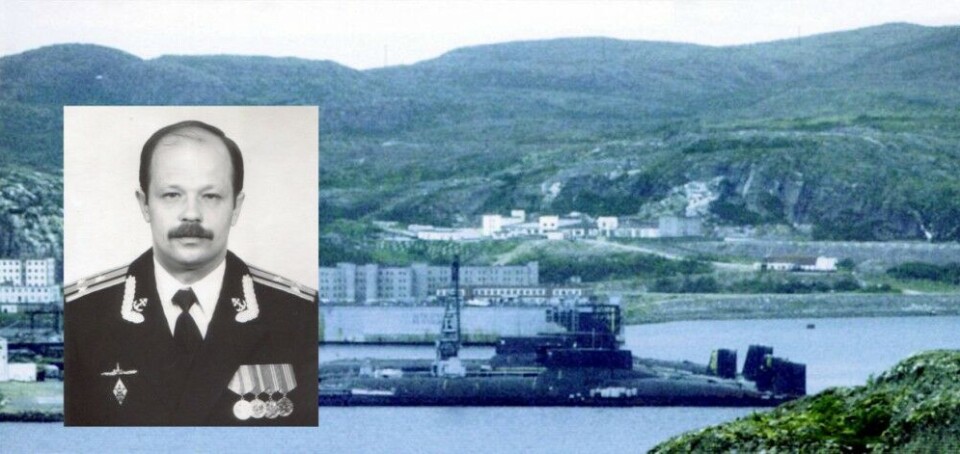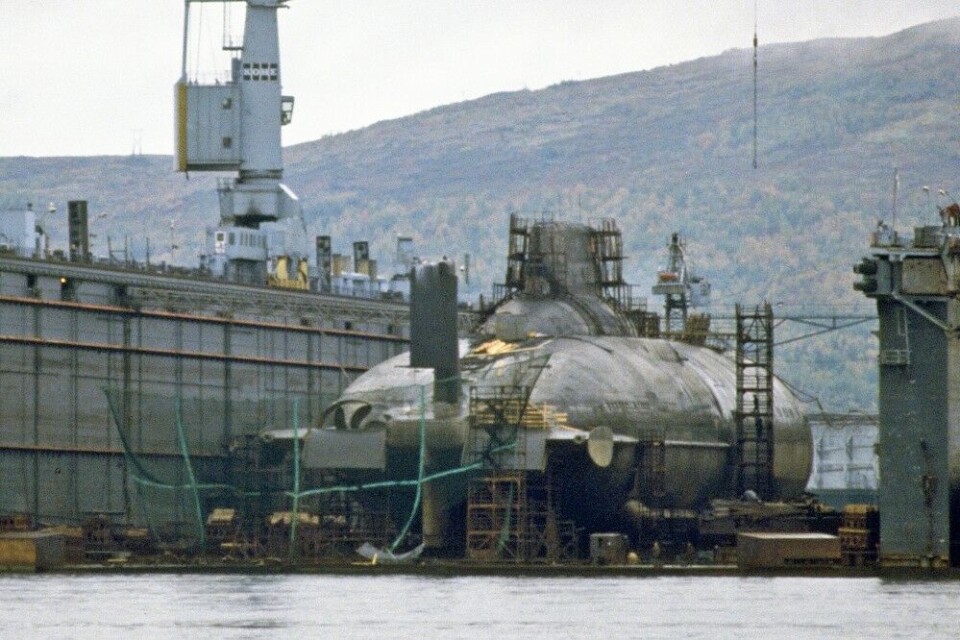
Captain who saved White Sea from nuclear disaster dies at 67
When a training missile exploded in the silo, Captain Igor Grishkov immediately dived his enormous Typhoon submarine to flush away burning rocket fuel before the other nuclear weapon-tipped missiles were set on fire.
One of Russia’s most unknown heros, submarine captain Igor Grishkov, is dead 67 years old, the blog site Korabel reports. After retirement, he moved to Severodvinsk by the White Sea where he lived until his death this week.
Severodvinsk Mayor, Igor Skubenko, is quoted saying Captain Grishkov will remain forever in the history of Severodvinsk and his successful experience and struggle to rescue the submarine will be adopted by many other submarine commanders.
Failed coup in Moscow
What happened in the White Sea in September 1991 is little known to open public sources. Captain Igor Grishkov was sailing out the White Sea to the area where he was told to launch a ballistic test missile supposed to hit the designated target on the Chukotka Peninsula in the Far East of the Soviet Union.
Grishkov’s vessel, TK-17, was the fifth of the six giant Typhoon class submarines.
On board the 170 meters long vessel was a crew of 160 and, for the Soviet Union more important; a capacity of 20 SS-N-20 ballistic missiles, each tipped with up to 10 warheads. Fully armed, such submarine could carry 200 nuclear warheads. In other words, one of the deadliest machines ever built by humans.
For Moscow, the test was of high political importance. This was just a month after the failed coup against Mikhael Gorbachev and showing the outside world that everything was still intact became a priority mission for the strategic nuclear weapon forces of the USSR.
The test-shooting voyage in the White Sea became nothing but a terrifying failure.
First 23 years later, in 2014, parts of the story were published in Pravda Severa, the regional newspaper in Arkhangelsk. Other pieces of what happened are mentioned in navy blog sites and other Russian navy publications.
Sailing in subsea position to the area where the test-launch should take place, Captain Igor Grishkov knew the procedures. At this time, his vessel was only four years old and a proud for the Soviet Navy. Internationally, the Typhoons were well known from the thriller film from 1990 - The Hunt for Red October - based on Tom Clancy’s novel with the same name published in 1984.
Ready to launch
The Typhoon submarines and the on board SS-N-20 nuclear missiles are designed to launch its nuclear weapons from submerged position. So also for this test on September 27, 1991.
10-9-8-7-6….. , then suddenly the missile exploded, blowing off the cover of the silo. Captain Grishkov ordered his men in the command centre of the submarine to blow the tanks with air and make an emergency surfacing. At surface, the crew could see a massive fireball over the deck.
All 20 nuclear missile-silos on the Typhoons are in front of the tower.
The fire came from the solid propellant of the exploded missile that had leaked inside the silo and all around the deck near the blown-to-pieces part of the silo-cover. Also the rubber-cover of the outer hull was on fire. Within seconds, Captain Grishkov reportedly understood the danger. What would happen if the fire spread and triggered overheating of the highly flammable propellant in the other 19 missiles. Those who were not on board for test shooting but aimed for real nuclear war.
Dive man, dive!
There was only one option; dive down again and hope the seawater would extinguish the fire. He warned his crew members in the missile compartment to be prepared for flooding. Diving a more than 30,000 tons heavy vessel just after emergency surfacing is not easy, its dangerous and its risky.
But the alternative was so much worse.
The commanders on bridge managed the task quickly and then surfaced again. The manoeuvre was successful and a real nuclear catastrophe in the White Sea was miraculously prevented.
A Typhoon submarine is powered by two 190 MWt reactors. How many of the possible maximum of 190 nuclear warheads that were on board at the time of the accident is not known. Information about exact numbers of nuclear weapons is surrounded by secrecy, in the Soviet Union, like in today’s Russia. And in other nuclear weapons states.
Awaiting scrapping
TK-17 sailed back to the yard in Severodvinsk, some 40 kilometres west of Arkhangelsk on the south coast of the White Sea.
Back in port, the accident was kept secret to most people. Damage control was done, the burnt silo was cleaned and sealed off and the rubber on the outer hull was repaired. The silo in question was never used again, and TK-17 continued to sail with 19 missiles until she was laid up in 2004 and put in reserve.
Although the heroically saving of his crew and submarine, Captain Igor Grishkov was never awared with the medal “Hero of the Soviet Union” or today’s “Hero of Russia”.
For the last 14 years, TK-17, also holding the name “Arkhangelsk” stays side-by-side with another Typhoon class submarine, the “Severstal” TK-20 in Severodvinsk. Both two vessels are awaiting decommissioning.

You can help us…
…. we hope you enjoyed reading this article. Unlike many others, the Barents Observer has no paywall. We want to keep our journalism open to everyone, including to our Russian readers. The Independent Barents Observer is a journalist-owned newspaper. It takes a lot of hard work and money to produce. But, we strongly believe our bilingual reporting makes a difference in the north. We therefore got a small favor to ask; make a contribution to our work.
















